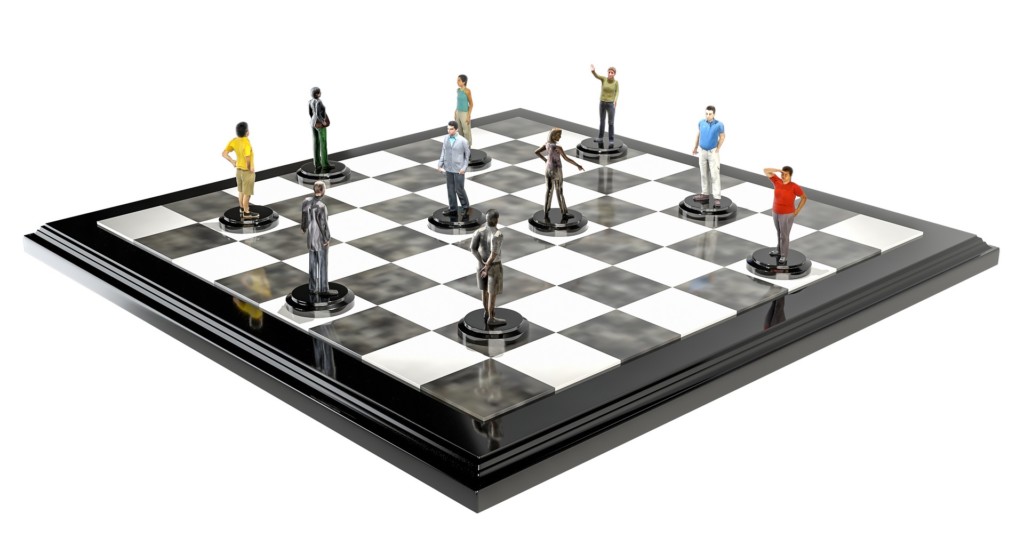5 Ways Companies Can Use Gamification at Work and the Mistakes to Avoid

Gamification has become a powerful tool for businesses to encourage and reward positive behavior in the past decade. However, it can also be easily misused if not executed correctly. By understanding these six signs that your company is misusing gamification, you will better understand what needs to change to achieve success.
Gamification at Work
Gamification at work is the integration of game mechanics to encourage participation and learning. It can be used for employee productivity, training, or recruitment. For example, it would be possible to have an employee suggest a new idea for improving efficiency in work time management – and have their peers vote on the idea’s feasibility before it is implemented.
It allows employees to suggest ideas that make sense to them and consider how well they might fit as a company as a whole. Gamified tasks like this are the perfect combination of benefits such as creativity and engagement found with new technology (or gamification) while fostering teamwork among colleagues working together through collaboration and cooperation at work!
A 2018 survey revealed that incorporating gamification with traditional goal setting has increased performance by up to 80%. When completing a tedious task, employees are more likely to be motivated by intrinsic factors and extrinsic factors when doing something challenging. Ultimately, gamified work systems can be used for employee productivity, training, and recruitment processes.
5 Ways You Can Implement Gamification in the Workplace
You want to create an environment that is collaborative and fun. Gamification can help you do this! Here are five ways in which your company can deploy gamification:
1. Boost employee performance
Using gamification to boost performance in a low-performance area can be a big help.
One way to use gamification is to set up a virtual employee advancement program where you incentivize employees to accumulate through completing tasks or training for future promotion. The rewards grow more challenging and exciting as the level of advances grows, creating an aspirational incentive.
As well as making it enjoyable and educational, it will also serve as motivation fodder. It can even create an interactive experience, not unlike some computer games-where personal successes provide feedback that leads them through on-the-job advances.

2. Incorporating gamified solutions with employee engagement
Accenture encouraged the sharing of important content among their peers, and employers rewarded employees for doing so. The more points they earned, the better rewards they received, which led to an increase in productivity and innovative ideas throughout the company.
3. Gamifying recruitment process
Deloitte created a video game that gives new employees an immersive virtual office tour. The process begins with visitors arriving at their airport and choosing which city they want to visit, then taking off for Beijing or Shanghai, where Deloitte’s virtual local offices are waiting for them.
There are conversation options in these locations so potential hires can chat up locals and learn more about what it would be like working as part of this company before ever setting foot inside!
4. Applying gamification principles in employee training and learning
Cisco has devised a clever way to teach their employees new skills through gamification. The training was divided into departments, with different teams learning how to use social media platforms like Twitter and LinkedIn for specific purposes within the company. It teaches them about these networks and expands what is possible when using digital tools in general.

5. Gamifying internal communication
Target has introduced a new system to make communication between their management and employees easier. Target noticed that cashiers were not receiving feedback from the managers on duty, which led them to implement this change in policy for better morale among staff.
When the company implemented a gamified system for its employees, it saw increased internal communication and employee engagement. To start with, cashiers were given the ability to play games while checking customers’ items instead of just scanning each different article of clothing or food item without any excitement at all.
A light was installed on top of every checkout post, which would blink green if everything scanned got it right. Or red when there had been some sort of error that required another person’s attention. This simple change helped promote camaraderie between workers by making them work together more efficiently than before.
5 Signs You’re Using Gamified Solutions the Wrong Way
1. Employees are not rewarded for good work.
A company that doesn’t reward its employees for their excellent work will have them doing significantly less. The worker’s morale will decrease, and they may feel like their jobs are unappreciated. Employees who feel unappreciated do not dedicate as much time to producing quality products to get a rise.
Additionally, these employees tend to be unmotivated and bored with their jobs, leading to mistakes on the job or reduced production levels. These problems translate into lost money for businesses. So it becomes even more important to reward employees when they get recognition for good work.
2. Company is too focused on competition instead of collaboration.
Employees will eventually begin to feel like their company is more like a hostile work environment, and trust among colleagues on high levels will decrease. This cold atmosphere leaves workers handling highly motivated to concentrate on surviving in this new culture instead of making strides in careers or projects. Eventually, this can result in low performance due to efficiency and productivity decline.
3. Gamification does not promote a sense of accomplishment.
Gamification is often unsuccessful in promoting a sense of accomplishment when it does not fit with a user’s values or goals.
Gamification may also be ineffective if the gamified activity is
- too difficult,
- requires more time than the user has available,
- too monotonous or repetitive to capture the user’s interest,
- disconnected from other things that matter to the person, or
- offers rewards that are not pleasurable.
In other words, gamification is most successful in promoting a sense of accomplishment when it complements and reinforces something inherent to who we are (values and goals) & what matters to us (desires).

4. The company doesn’t provide any feedback about performance and progress
Employees may not know the status of performance, expectations and goals. It is challenging to evaluate processes and systems, which hampers performance improvement initiatives. Team members are less likely to take the industry without feedback or clear direction for how their work impacts business outcomes.
Feedback on gamified tasks must be given consistently at all levels, so employees don’t feel like their time and effort are wasted if they are overlooked by senior management.
However, it can also lead to demotivation and insufficient company loyalty towards leaders who do not follow what was communicated. A trust issue arises when employers don’t fulfill employees’ promises because they may find giving feedback pointless with no changes due to prior feedback.
5. The company has an unclear set-up, rules, and rewards system for gamified activities
Suppose your company’s set-ups or rules for gamified tasks are unclear. They can create mixed messages and inconsistent treatment. For example, people may feel unmotivated to complete a task because there is no clear understanding of the end goal. Or there’s inconsistency in giving rewards or accolades after doing a great job when others who did not do it well are passed over for praise.
Companies with fuzzy gamification systems often have employees that never engage in the system long-term, making them ineffective and lose interest quickly. It also causes an unjustified imbalance between the invested time and rewards. It will lead to backlash from other employees wondering why they’re given less time on their tasks than less productive coworkers or peers that get applauded for showing nothing extra.
In Summary
With the rise of gamification in today’s workplace, it is essential to understand how a well-designed system can help your business. When done right, a gamified environment will provide many benefits for employees (increased engagement and productivity), customers (enhanced customer experience), and ROI for employers as they see increased sales revenue.
Contact our specialist today if you are interested in having Cluehub create a custom game or game design strategy for your company. We offer free demo play!
Gamification, Serious Games or Game-Based Learning?

Gamification Use Cases: How to Gamify Corporate Training
Gamification is one of the most potent ways to engage learners. It’s an excellent way for your employees to learn and apply their knowledge in real-world situations. However, it can be hard to get started with gamification because there are many different tools out...
Online Escape Games: An Exciting Virtual Event Add-on or a Good Marketing Study Tool?
Face-to-face events are all fun and memories until the pandemic came. It took away the most exciting parts in every socio-business gathering which are meeting new friends, onboarding fresh investors, and gaining valuable insights that help you improve your business...
Game-based Learning Solutions: Will it Bring Study-Game Balance to Students?
Games pique the interest of many students, especially if it's visually appealing, tasks are challenging, and is not too academic. However, too much of it prevents the students from achieving certain learning outcomes, which forfeits the core objective of gamifying...



